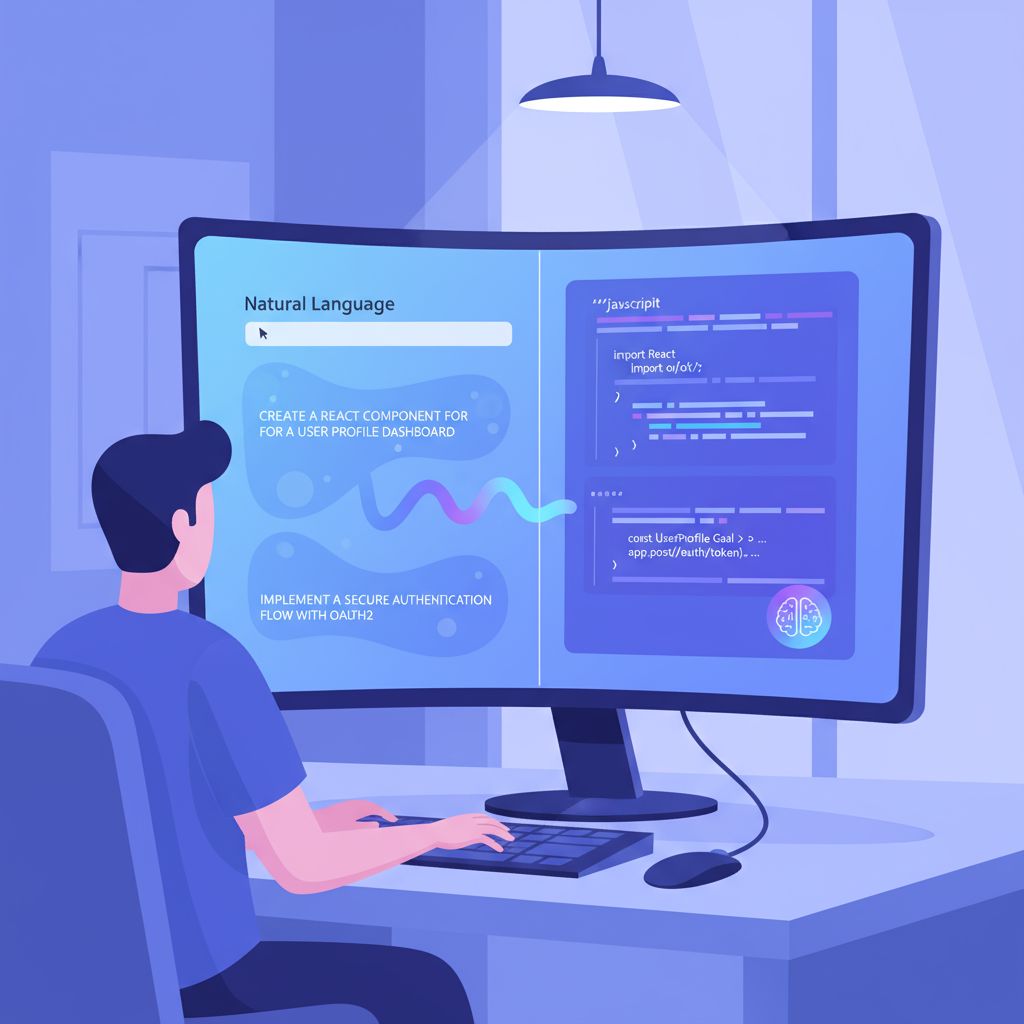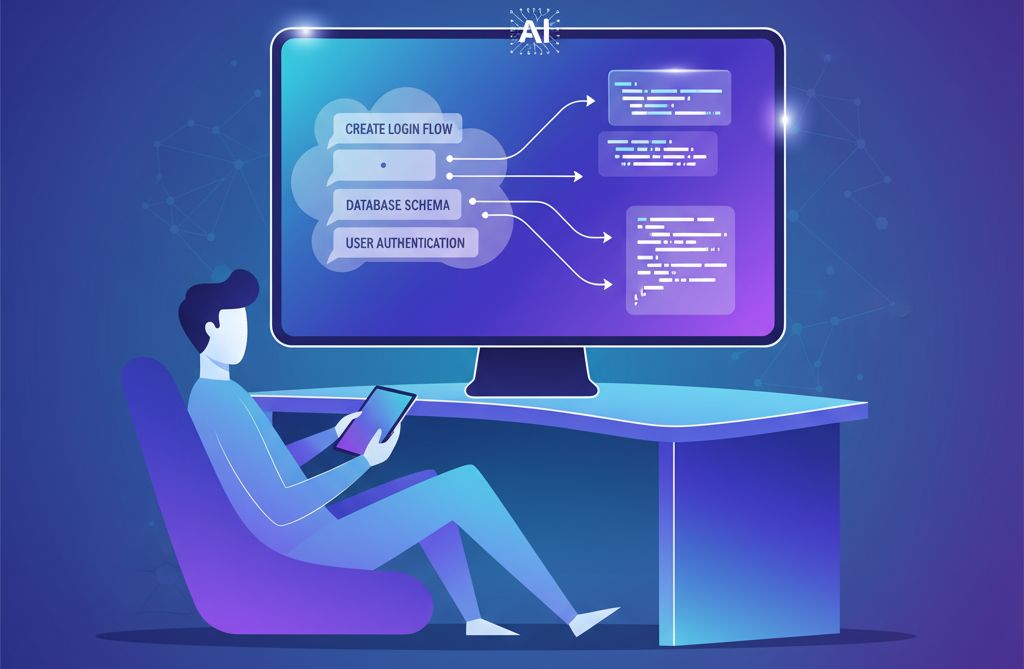Vibe coding has emerged as a revolutionary approach to software development, where natural language descriptions transform into functional applications through AI assistance. Coined by AI researcher Andrej Karpathy in early 2025, this methodology shifts the developer's role from writing code line-by-line to guiding AI through conversational prompts. However, successful vibe coding isn't just about casual prompting—it requires strategic planning and structured approaches to achieve optimal results.

A modern illustration showing the vibe coding workflow where natural language transforms into functional code
Understanding the Vibe Coding Methodology
Vibe coding operates on two distinct levels: the low-level iterative loop of refining specific code pieces and the high-level lifecycle of building complete applications. Unlike traditional programming where you focus on implementation details, vibe coding allows you to concentrate on desired outcomes while AI handles the actual code generation.
The process works through a continuous cycle of input → generation → testing → refinement. AI models analyze natural language prompts using techniques like natural language processing, code generation, and contextual understanding to produce functional code. This approach has proven so effective that companies like Wipro have built production-ready modules in just 20 hours using AI-driven development methodologies.
The Foundation: Planning Before Prompting
Why Planning Is Critical
Thorough planning is absolutely essential for vibe coding success. Projects without detailed plans typically experience inconsistent results, architectural confusion, and frequent dead ends, while well-planned projects enjoy faster iteration, consistent quality, and maintainable code.
The key difference lies in how AI interprets ambiguity. While human developers might ask clarifying questions, AI assistants make assumptions that often misalign with your intentions. Additionally, AI lacks consistent context over long projects, making detailed plans crucial for maintaining coherence across development sessions.
Creating Your Vibe Coding Blueprint
An effective vibe coding plan should include:
Functional Requirements: What should the application do?
User Flows: How will people interact with it?
Technical Constraints: What technologies, frameworks, or limitations exist?
Success Criteria: How will you know when features are complete?
You can even use AI to help create this plan by asking it to suggest requirements, identify potential issues, or format your ideas into a structured document.
Structuring Effective Prompts
The Four-Part Framework
When crafting prompts, focus on four key areas:
Persona: Define your role and context ("I am building a React app for e-commerce")
Task: State the specific action clearly ("Create a product listing component")
Context: Provide relevant details ("It should display price, image, and reviews")
Format: Specify the desired output format ("Use TypeScript and include prop interfaces")
Prompt Structure Best Practices
Start with Context, Task, and Details. Structure your prompts with clear sections covering the context (what you're building), the specific task at hand, guidelines or style preferences, and constraints. This approach helps the model better understand your requirements while forcing you to think through what you want to build.
Be Specific and Descriptive. Use clear, precise language and avoid vague instructions. Include specific details about desired context, outcome, length, format, and style. For example, instead of "make it responsive," specify "make the layout adapt to mobile screens with a single-column design below 768px width".
Use Clear Separators. Place instructions at the beginning of prompts and use separators like "###" or triple quotes to distinguish between instructions and context.
Advanced Prompting Techniques
The "Don't Code First" Approach
One of the most powerful techniques is asking AI "Tell me your plan first; don't code". This ironically common prompt allows you to review the AI's approach before implementation. Nine out of ten times, AI will suggest an overly complicated solution that you can then ask it to simplify.
Follow up with "Give me a few options, starting with the simplest first. Don't code" to get multiple approaches ranked by complexity. This prevents AI from acting like an overconfident intern who does more than asked and introduces unnecessary bugs.
Breaking Down Complex Tasks
Simplicity is your best friend for vibe coding. Models like Claude tend to overcomplicate solutions, so use these approaches:
Ask AI to "Keep it simple" in your prompt
Request "Implement the simplest next step I can test"
Ask AI to change only specific files
Start fresh chats for each feature to avoid bloating the context window
Using Visual Context
Include screenshots and images when possible. A picture is worth a thousand words to AI, especially when creating designs or fixing bugs. Visual context helps AI understand exactly what you see and want to achieve.
Managing the Development Process
Iterative Refinement
Vibe coding is inherently iterative. Start with simple prompts and gradually add elements and context as you aim for better results. When you have a large task involving multiple subtasks, break it down into simpler components and build up progressively.
Using Selectors and Constraints
Most vibe coding platforms support selectors for referring to specific elements. When making changes, be very specific about what you want and add "change nothing else!" at the end of your prompt. This prevents AI from making unwanted modifications to other parts of your application.
Lock and Target Features
Use advanced controls like Target file (makes prompts modify selected files) and Lock file (prevents AI from changing specific files). Lock files once you find functionality that works well to prevent accidental modifications.
Tools and Platforms for Vibe Coding
Leading Platforms
Lovable excels in smooth end-to-end app generation with explanations at each step. Bolt offers flexibility with useful integrations for Stripe and Figma, plus generous free tiers. Cursor serves as the go-to platform for debugging and perfecting vibe-coded applications with its AI-powered IDE experience.
Specialized Tools
Claude Code stands out for finding obscure bugs in complex code and supports mobile development. GitHub Copilot remains the industry standard for AI-assisted coding with context-aware suggestions. Amazon CodeWhisperer provides tight AWS ecosystem integration for cloud-focused development.
Common Pitfalls and Solutions
Avoiding Prompt Bloat
Don't try to put an entire product requirements document into one massive prompt unless it's your initial project prompt. Focus on single, specific tasks while being as descriptive as possible about that one objective.
Managing Context Windows
Start fresh chats for each feature to prevent context window bloat. This helps maintain focus and prevents AI from getting confused by too much historical information.
Quality Control
Remember that AI-generated code might introduce vulnerabilities if not thoroughly reviewed. Maintain human oversight throughout the development process, ensuring AI serves as a tool to augment your capabilities rather than replace critical thinking.
The Future of Vibe Coding
The vibe coding movement is accelerating rapidly. By 2025, over 80% of software teams are expected to adopt AI tools like GitHub Copilot. AWS has introduced the AI-Driven Development Lifecycle (AI-DLC) methodology, demonstrating how AI can condense months of development work into days.
However, successful vibe coding still requires understanding the underlying principles of good software development. While AI handles implementation details, developers must remain engaged in architectural decisions, requirement gathering, and quality assurance.
The key to mastering vibe coding lies not in casual prompting, but in strategic planning, structured approaches, and iterative refinement. By following these principles and techniques, you can harness the full potential of AI-assisted development while avoiding common pitfalls that derail projects.
As vibe coding continues to evolve, those who master the art of prompt planning and AI collaboration will find themselves at the forefront of a new era in software development—one where ideas can become applications faster than ever before, but only with the right strategic approach.



